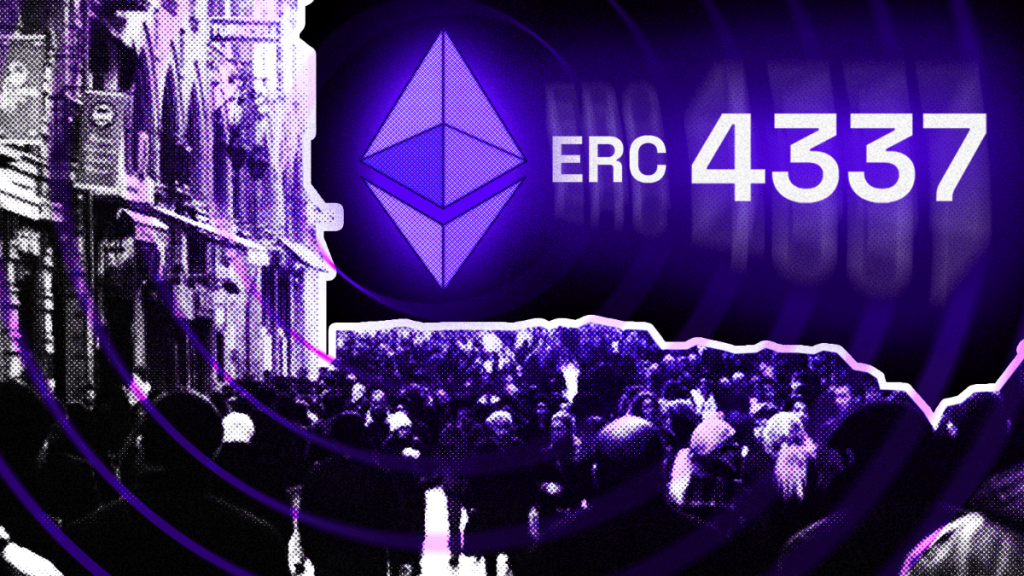-
Alchemy: The Web3 Development Platform

In the world of blockchain and Web3, developers are constantly on the lookout for robust and efficient tools to aid in their development process. Alchemy is a web3 development platform that aims to provide developers with a comprehensive set of tools to create decentralized applications (dApps) on the Ethereum blockchain. In this article, we will dive deeper into what Alchemy offers and how it has emerged as a leading player in the web3 development space.
Introduction to Alchemy
Alchemy is a platform for developers working with blockchain technology, offering a range of tools designed for web3 development. The platform’s core products include Alchemy Supernode, Build, Notify, Transact, and Monitor. Alchemy offers developers a range of APIs to build decentralized applications that interact with the Ethereum blockchain. The platform enables developers to scale their dApps with ease by leveraging features like instant testnet, enhanced APIs, faster development time, and high performance.
Alchemy’s Web3 Development Tools
Alchemy provides a variety of web3 development tools that make it easier for developers to build and deploy decentralized applications on the Ethereum blockchain. Some of the key web3 development tools provided by Alchemy are:
- Alchemy Supernode: Alchemy Supernode is a scalable infrastructure designed for Ethereum developers to run their dApps at scale. The infrastructure is designed to handle high volumes of transactions and provide faster response times.
- Build: Build is Alchemy’s web-based development environment for building and deploying smart contracts on the Ethereum blockchain. The environment is designed to be user-friendly and includes a range of development tools and templates.
- Notify: Notify is Alchemy’s tool for sending notifications to users about blockchain transactions. The tool is designed to provide real-time updates to users about their transactions.
- Transact: Transact is Alchemy’s tool for managing blockchain transactions. The tool is designed to be user-friendly and provides developers with an easy way to manage and execute transactions on the Ethereum blockchain.
- Monitor: Monitor is Alchemy’s tool for monitoring blockchain activity. The tool provides real-time data about the Ethereum blockchain and enables developers to monitor the performance of their dApps.
#blockchain #development #alchemy
-
YemChain vs Ethereum: A Comprehensive Analysis of Two Leading Blockchain Platforms

Introduction
Blockchain technology has revolutionized the way we conduct transactions and manage data. YEMChain and Ethereum are two blockchain platforms that have gained popularity among businesses and developers. In this article, we will compare YEMChain and Ethereum and evaluate their features, performance, and use cases.
Technical Specifications
YEMChain and Ethereum are both decentralized platforms that use blockchain technology. YEMChain is a newer platform, while Ethereum has been in the market for several years. YEMChain uses a consensus algorithm called Proof of Stake, which is more energy-efficient compared to Ethereum’s Proof of Work algorithm. Proof of Stake allows users to validate transactions and earn rewards by staking their coins.
Ethereum, on the other hand, uses the Proof of Work algorithm, which requires miners to validate transactions by solving complex mathematical problems. This process consumes a significant amount of energy, which has been a concern for environmentalists. However, Ethereum has announced that it will switch to a Proof of Stake algorithm, which is expected to reduce its energy consumption.
Smart Contracts
One of the main features of both YEMChain and Ethereum is their support for smart contracts. Smart contracts are self-executing contracts that are stored on the blockchain. They allow businesses and developers to automate processes, reduce costs, and increase transparency.
YEMChain and Ethereum use different programming languages for smart contracts. YEMChain uses Solidity, which is also used by Ethereum, while Ethereum also supports other programming languages like Vyper and LLL. This gives developers more flexibility in creating smart contracts that suit their needs.
Performance
YEMChain and Ethereum have different transaction processing speeds. YEMChain claims to be able to process up to 10,000 transactions per second, while Ethereum’s current capacity is around 15 transactions per second. However, Ethereum is working on scaling solutions like sharding and layer 2 solutions, which are expected to significantly increase its transaction processing speed.
Use Cases
YEMChain and Ethereum have different use cases. YEMChain is designed to be a payment system, decentralized finance, supply chain management, and gaming while Ethereum is a more versatile platform that can be used just for applications like decentralized finance, supply chain management, and gaming.

Conclusion
In conclusion, YEMChain and Ethereum are two blockchain platforms that have different features, performance, and use cases. YEMChain’s Proof of Stake algorithm is more energy-efficient compared to Ethereum’s Proof of Work algorithm. Both platforms support smart contracts, but Ethereum offers more programming language options. YEMChain has a higher transaction processing speed compared to Ethereum, but Ethereum is working on scaling solutions to increase its capacity. Finally, YEMChain is focused on payment solutions, while Ethereum has a broader range of use cases.
YEM itself will always be centralized to a certain degree, because YEM Foundation will always have a certain power.
See my blog post for more Blockchain related articles at Stephen Hodgkiss
-
Unlocking the Power of ERC-4337: A Comprehensive Guide to Data Contracts on Ethereum Blockchain

Introduction: ERC-4337 is a new and exciting technology that has been making waves in the world of blockchain. If you’re looking for a comprehensive guide to everything you need to know about ERC-4337, you’ve come to the right place. In this article, we’ll explain what ERC-4337 is, how it works, and the benefits it offers.
What is ERC-4337?
ERC-4337 is a new standard for the Ethereum blockchain that provides a way to store and manage large amounts of data in a secure and decentralized way. It was developed to solve the problem of scalability on the Ethereum blockchain, which has been a major obstacle for the adoption of decentralized applications.
How does ERC-4337 work?
ERC-4337 works by creating a new type of smart contract that is designed to handle large amounts of data. These smart contracts are called “Data Contracts,” and they can store and manage any type of data, from simple strings to complex structures. Data Contracts are created using a special template that defines the structure of the data and the rules for accessing it.
Benefits of ERC-4337:
- Scalability: One of the most significant benefits of ERC-4337 is scalability. The Data Contracts can store and manage large amounts of data, which makes it possible for decentralized applications to scale to meet the needs of large user bases.
- Security: Another benefit of ERC-4337 is security. The Data Contracts are stored on the blockchain, which makes them virtually impossible to hack or manipulate. This means that the data stored in the contracts is secure and tamper-proof.
- Decentralization: ERC-4337 is a decentralized technology, which means that there is no central authority controlling it. This makes it more resilient to censorship and other types of attacks, making it a more reliable option for storing and managing data.
Conclusion: ERC-4337 is an exciting new technology that offers a lot of benefits for developers and users alike. Its scalability, security, and decentralization make it an ideal solution for storing and managing large amounts of data in a decentralized and secure way. If you’re interested in learning more about ERC-4337, we encourage you to do your own research and explore its potential.
For further reading on ERC-4337, see my article Unlocking the Benefits of ERC-4337: What You Need to Know.
-
How ERC-4337 Could Revolutionize the Ethereum Network

I. Introduction
ERC-4337 is a proposed Ethereum Improvement Proposal (EIP) that aims to introduce a new function that enables the implementation of a fee market for block space in Ethereum. The significance of this proposal is that it seeks to address the scalability and transaction throughput limitations of the Ethereum network. In this post, we will discuss ERC-4337 in detail and its potential impact on the Ethereum network.
a. Background:
Before we delve into ERC-4337, it is important to understand the current fee model used in the Ethereum network. Currently, Ethereum uses a gas-based fee model, where transactions are priced in gas, a unit of measurement that represents the computational effort required to execute a transaction. Miners are incentivized to include transactions with higher gas prices in the block they are mining, as they earn a fee for each gas unit they process. This has led to a competitive fee market where users bid up gas prices to ensure their transactions are included in a timely manner.
However, this model has several limitations. Firstly, the gas limit of each block restricts the number of transactions that can be included, leading to congestion and high fees during periods of high network usage. Secondly, the gas price mechanism is not responsive to changes in network demand, as users can only set a maximum gas price they are willing to pay, rather than a dynamic price based on network congestion.
b. ERC-4337 Proposal:
ERC-4337 proposes the introduction of a new function, called the “block base fee,” which will allow users to specify the minimum fee they are willing to pay for their transaction to be included in a block. This fee will be used to compensate miners for the block space they provide, and will be adjusted dynamically based on network congestion. In times of high demand, the fee will increase, incentivizing miners to prioritize transactions with higher fees. In times of low demand, the fee will decrease, ensuring users do not overpay for block space.
The block base fee will be determined by a formula that takes into account the current block’s gas limit and the gas usage of the previous block. This formula ensures that the block base fee is responsive to changes in network demand, while also preventing sudden spikes in fees that could harm the network’s usability.
c. Potential Impact:
If implemented successfully, ERC-4337 could significantly improve the scalability and usability of the Ethereum network. By introducing a more dynamic fee market, users will be able to transact with greater predictability and at a lower cost. This could drive greater adoption of Ethereum and its associated decentralized applications, as users will not be deterred by high fees and slow transaction times.
d. Conclusion:
In conclusion, ERC-4337 is a proposed Ethereum Improvement Proposal that seeks to address the scalability and transaction throughput limitations of the Ethereum network. The introduction of a block base fee could significantly improve the network’s usability and drive greater adoption. As the proposal is still under review, it remains to be seen whether it will be implemented and how effective it will be. Nonetheless, it is an exciting development in the ongoing efforts to improve and scale the Ethereum network.
You can view the full in-depth article on my blog here Stephen Hodgkiss where the following topics are discussed:
II. What is ERC-4337?
III. Features and benefits of ERC-4337
IV. Use cases for ERC-4337
V. Technical details of ERC-4337
VI. Conclusion
-
Digital Loyalty Programs for Small Businesses: Why They Matter and How to Implement Them

Learn why digital loyalty programs are important for small businesses and how to implement them effectively. Discover the benefits, best practices, and tips for success in this comprehensive guide.
Introduction:
Small businesses face numerous challenges when it comes to building customer loyalty. With limited resources and a smaller customer base, it can be difficult to compete with larger businesses that can afford to invest in expensive loyalty programs. However, with the advent of digital technology, loyalty programs have become more accessible and affordable for small businesses.
In this article, we will explore the importance of digital loyalty programs for small businesses and provide tips on how to implement them effectively. From the benefits of customer loyalty to the best practices for building a successful program, we’ll cover everything you need to know to get started.

Why Digital Loyalty Programs Matter for Small Businesses:
Building Customer Loyalty:
- One of the primary benefits of loyalty programs is their ability to build customer loyalty. By rewarding customers for their repeat business, small businesses can establish long-term relationships that keep customers coming back.
Boosting Revenue:
- Loyalty programs can also increase revenue by encouraging customers to spend more. By offering rewards for reaching certain spending thresholds, small businesses can incentivize customers to make additional purchases.
Attracting New Customers:
- Loyalty programs can also attract new customers by offering promotions and rewards to new sign-ups. By offering a free item or discount for joining the program, small businesses can entice new customers to try their products or services.
Best Practices for Implementing Digital Loyalty Programs:
Keep it Simple:
- A loyalty program should be easy for customers to understand and use. Keep the reward structure straightforward and avoid making the program overly complicated.
Choose the Right Rewards:
- Offer rewards that are meaningful and relevant to your customers. Consider what motivates your customers and what they are likely to value.
Promote the Program:
- Make sure customers are aware of your loyalty program and the rewards it offers. Promote the program on your website, social media, and in-store.
Use Technology:
- Digital loyalty programs are much easier to implement and manage than traditional programs. Use a loyalty program app or software to track customer rewards and make it easy for customers to sign up.

Frequently Asked Questions:
Q: How can I make my loyalty program stand out from my competitors?
A: Offer unique rewards or promotions that your competitors don’t have. For example, you could offer a personalized gift or exclusive access to special events.
Q: How often should I update my loyalty program?
A: It’s important to keep your loyalty program fresh and relevant to your customers. Consider updating the rewards or structure every 6-12 months.
Q: How can I measure the success of my loyalty program?
A: Track customer engagement, repeat business, and overall revenue to measure the success of your loyalty program.
Conclusion:
Digital loyalty programs are a powerful tool for small businesses looking to build customer loyalty and increase revenue. By implementing best practices and keeping the program simple and easy to use, small businesses can create a program that is effective and engaging for customers. So, if you’re looking to boost customer loyalty and drive revenue, consider implementing a digital loyalty program for your small business today!
Recommendations
In today’s fast-paced and digital world, small businesses must adapt to stay competitive. One way to do so is by implementing a digital loyalty program, and digitalrewards.store is the perfect platform to get started. With a wide range of customizable features and an easy-to-use interface, this platform is designed to help businesses of all sizes create effective loyalty programs that drive customer engagement, repeat business, and increased revenue.
Digital loyalty programs offer a host of benefits, such as reduced marketing costs, increased customer retention, and improved customer satisfaction. With digitalrewards.store, you can easily design and manage a loyalty program that fits your specific business needs. Whether you want to reward customers for their purchases or incentivize them to engage with your brand on social media, this platform has got you covered.
To ensure the success of your digital loyalty program, it’s essential to follow best practices and use proven strategies. This is where digitalrewards.store truly shines. With expert guidance and support, you can create a loyalty program that not only meets your business goals but also provides a seamless experience for your customers. So why wait? Start implementing your digital loyalty program today with digitalrewards.store and take your business to the next level.
-
Using Digital Reward Tokens to Support Social and Environmental Causes

Introduction:
In an age where digital technologies are driving a revolution in the way we interact with each other, the concept of digital reward tokens is gaining traction. Digital reward tokens are digital tokens that can be exchanged for rewards, such as discounts and access to special offers. The concept of digital reward tokens is being used to support social and environmental causes, allowing individuals and organizations to easily donate funds to support various initiatives. In this article, we will explore how digital reward tokens can be used to support social and environmental causes.
What Are Digital Reward Tokens?
Digital reward tokens are digital tokens that can be exchanged for rewards such as discounts, access to special offers, or donations to social and environmental causes. They are similar to traditional reward points, but they are digital and can be exchanged for tangible rewards. The tokens are stored on the blockchain, which is a secure, decentralized ledger that allows for secure and transparent transactions.
The Benefits of Digital Reward Tokens
Digital reward tokens offer several benefits when used to support social and environmental causes. First, they are highly secure and offer a transparent way of tracking donations. This ensures that the funds go to the intended recipient. Second, they are highly efficient and cost-effective, as they are not subject to traditional banking fees. Finally, they are easy to use and are quickly becoming a popular way to donate to causes.
How Digital Reward Tokens Can Support Social and Environmental Causes
Digital reward tokens can be used to support social and environmental causes in a variety of ways. For example, they can be used to donate funds to charities and non-profit organizations. They can also be used to support campaigns and events that promote green initiatives, such as planting trees or cleaning up beaches. Additionally, digital reward tokens can be used to support educational initiatives, such as providing scholarships or funding for research projects.
Conclusion
Digital reward tokens are an innovative way to support social and environmental causes. They are secure, cost-effective, and easy to use. They can be used to donate funds to charities and non-profits, as well as to support green initiatives, educational initiatives, and more. As digital reward tokens become more popular, they are sure to revolutionize the way we support social and environmental causes.
-
The Potential of Digital Cashback Tokens to be used as a form of currency in Online Marketplaces

Benefits of Integration
The new digital cashback token launched on the blockchain has the potential to be integrated with existing loyalty programs, which could greatly increase the value of the rewards earned and make the process of earning and redeeming rewards much simpler and more streamlined.
Simplifying the Process of Earning Rewards
Traditionally, loyalty programs have been managed by individual retailers or companies, and consumers would have to keep track of multiple loyalty cards or accounts. This can be confusing and inconvenient for consumers, and it also limits the number of rewards that can be earned. However, by integrating the new digital cashback token with existing loyalty programs, consumers would be able to earn rewards from multiple retailers or companies using a single token.
For example, a consumer could earn rewards for purchases made at a grocery store and also earn rewards for using a certain credit card. These rewards would be accumulated in the form of a digital cashback token, which can be easily transferred and exchanged between consumers. This simplifies the process of earning rewards and makes it more accessible to consumers.
Utilizing the Token in Online and Offline Settings
Furthermore, the token’s ability to be used in both online and offline settings makes it a great option for integration with existing loyalty programs. This means that consumers can earn rewards for their purchases in physical stores as well as online, making it a great option for those who prefer to shop in person. Additionally, the token can be stored on a mobile device, making it easy for consumers to use it for transactions at physical stores, and also eliminates the need for physical cards or loyalty programs.
Customizing Rewards Based on Consumer Behavior
Another advantage of integrating the new digital cashback token with existing loyalty programs is the ability to customize rewards based on consumer behaviour. Retailers and companies can track consumer behavior and offer rewards based on their preferences, which could increase the value of the rewards earned and provide a more personalized experience.
Transparency and Security Features of the Token
In conclusion, the new digital cashback token launched on the blockchain has the potential to be integrated with existing loyalty programs. This integration can simplify the process of earning rewards and make it more accessible to consumers. The token’s ability to be used in both online and offline settings and its potential for customization can increase the value of the rewards earned and provide a more personalized experience. Furthermore, the transparency and security features of the token can provide an added layer of trust and confidence in the loyalty program, making it a valuable tool for both consumers and retailers.
-
The Benefits of Using a Digital Cashback Token as a Form of Currency

Introduction:
Cashback programs have been a popular way for consumers to earn rewards for their purchases for many years. Traditional cashback programs typically involve a consumer earning a certain percentage of their purchase amount back in the form of cash or credit to their account. However, these programs often come with limitations such as expiry dates for rewards, restrictions on how rewards can be used, and a lack of transparency in the rewards earned.
A new digital cashback token launched on the blockchain aims to improve upon these traditional cashback programs in several ways. One of the key advantages of this new token is that it is based on blockchain technology, which means that it is highly secure and transparent. This allows consumers to have full visibility into the rewards they have earned and when they can redeem them, as well as providing a tamper-proof record of their transactions.
Advantages
Another advantage of the new digital cashback token is that it is highly accessible and convenient. Unlike traditional cashback programs, which may only be available at certain retailers or for certain types of purchases, the new token can be used for various transactions. Additionally, the token can be easily transferred between consumers and can be used in both online and offline settings. This makes it a highly versatile and useful rewards currency.
One of the most exciting potential uses of the new digital cashback token is its ability to be integrated with existing loyalty programs. This means that consumers can earn rewards not just for their purchases, but also for other activities such as using a certain credit card or signing up for a newsletter. This could greatly increase the value of the rewards earned and make the process of earning and redeeming rewards much simpler and more streamlined.
Another potential use of the token is its ability to be used as a form of currency in certain online marketplaces. This could provide a new and convenient way for consumers to purchase goods and services, as well as a new revenue stream for merchants. The token could also be easily traded or exchanged for other cryptocurrencies, making it a highly liquid and flexible rewards currency.
In addition, the token can be used to incentivize certain behaviors or actions, such as environmental sustainability. For example, consumers can earn rewards for using Eco-friendly products or reducing their carbon footprint. This not only benefits the consumers but also encourages more sustainable practices on a larger scale.
The token can also be used in micropayments and other small transactions, which is particularly useful in the digital realm. This allows for frictionless and seamless small payments, making the token an excellent fit for the digital economy.
Finally, the token can be used to support local businesses and community development initiatives. For example, consumers can earn rewards for supporting local businesses or for participating in community events and activities. This not only benefits the local economy but also promotes a sense of community and engagement.
Conclusion
In conclusion, the new digital cashback token launched on the blockchain has the potential to revolutionize the way consumers earn and redeem rewards. With its high security, transparency, and versatility, it could provide a new and more valuable way for consumers to earn rewards for their purchases and other activities. It also has the potential to be used in a wide variety of settings and transactions, making it a highly useful and flexible rewards currency.
-
Understanding The Technical Aspects Of Launching A Token On The Blockchain

Understanding Blockchain Platforms
When launching a token on the blockchain, it’s important to have a solid understanding of the technical aspects involved. The blockchain is a decentralized, digital ledger that uses cryptography to secure transactions. Tokens are digital assets that can represent a variety of things, including virtual currency, loyalty points, or access to a product or service. Launching a token on the blockchain can be a complex process, but with the right knowledge, it can be done successfully.
First, it’s important to understand the different types of blockchain platforms that are available. The two most popular platforms are Ethereum and Bitcoin. Ethereum is a more flexible platform that allows for the creation of smart contracts, which are self-executing contracts with the terms of the agreement between buyer and seller being directly written into lines of code. This allows for the creation of tokens that can represent a variety of assets. Bitcoin, on the other hand, is primarily used as a digital currency and does not have the same flexibility as Ethereum.
Creating a Smart Contract
Once you’ve chosen a platform, the next step is to create a smart contract. A smart contract is a program that runs on the blockchain and automatically executes the terms of the agreement between parties. The process of creating a smart contract can be complex and requires a solid understanding of programming languages such as Solidity (used in Ethereum).
Deploying to the Blockchain
After the smart contract is created, the next step is to deploy it to the blockchain. This is typically done using a tool called a wallet, which is a software application that allows you to interact with the blockchain. Once the smart contract is deployed, it can be used to create and distribute tokens.
Legal and Regulatory Implications
It’s also important to consider the legal and regulatory implications of launching a token. Different countries have different laws and regulations regarding the launch of tokens, and it’s important to ensure that you are compliant with all relevant laws and regulations.
Post-Launch Token Management and Governance
Finally, it’s important to have a solid plan for post-launch token management and governance. This includes maintaining the smart contract, distributing tokens to investors, and ensuring that the token’s value is maintained.
Conclusion
In conclusion, launching a token on the blockchain is a complex process that requires a solid understanding of the technical aspects involved. From choosing a blockchain platform to creating a smart contract and deploying it to the blockchain, the process can be challenging. However, with the right knowledge and planning, it can be done successfully. It’s crucial to consider the legal and regulatory implications, and post-launch token management and governance.
-
Subscribe
Subscribed
Already have a WordPress.com account? Log in now.